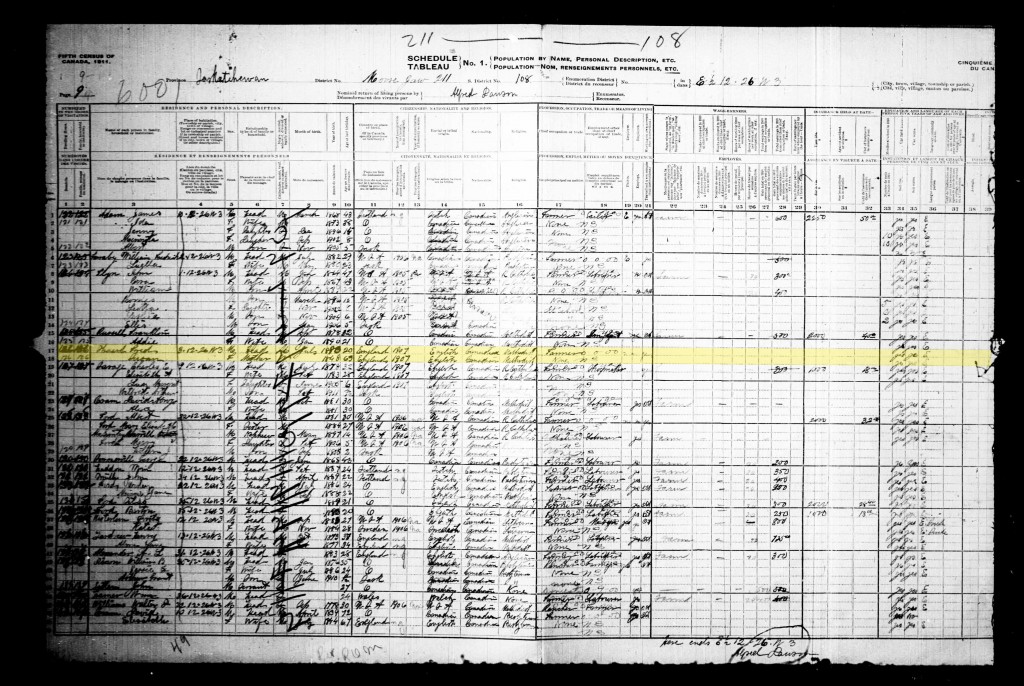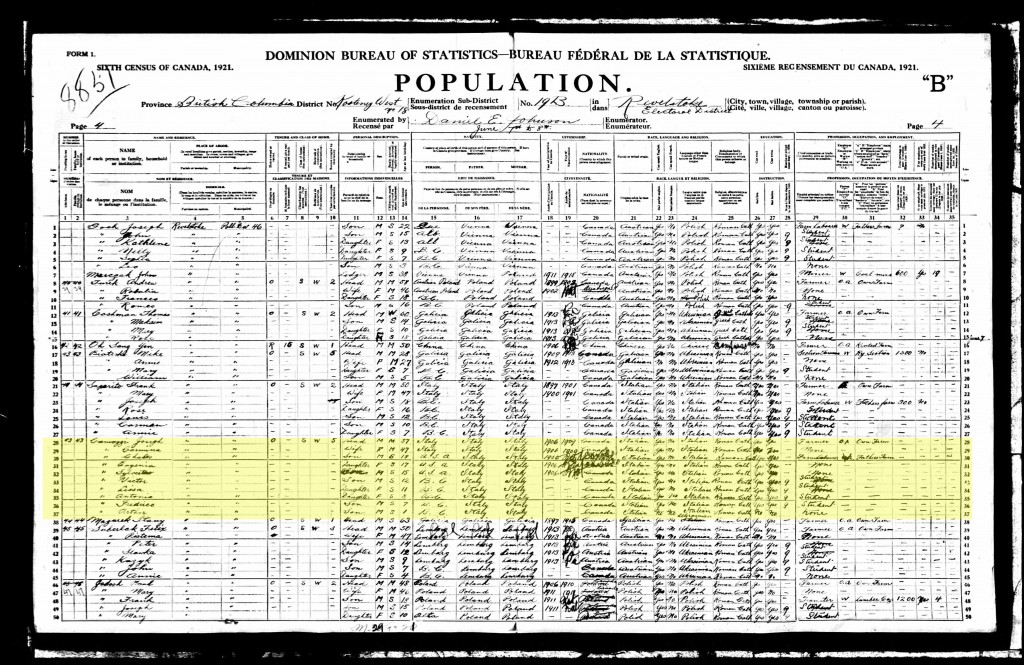
Canadian Census
Genealogists with Canadian ancestors are lucky enough to have a lot of censuses covering a wide range of time that are available online, to search ancestors.
Besides vital records, census records are a smart way to approach ancestors as they are a gold mine for information that is not easy to get from other sources. For example, the 1921 Census asked 35 different questions about each individual like: can read and write? months at school since September 1, 1920; employer, employee, worker, or working on own account?; total earnings in past 12 months, etc.
- In Canada, historical censuses (1666-1911) have been indexed, microfilmed, and digitalized. Indexes and links to them are listed at the Library and Archives Canada web site. Http://www.collectionscanada.gc.ca/
- These censuses are also available at:
Ancestry (subscription required; free at many public libraries): http://search.ancestry.com/search/group/canadiancensus FamilySearch (free): https://familysearch.org/search/
An index can also be found on Automated Genealogy website (http://automatedgenealogy.com/) where you can browse the indexed surnames in each district and sub-district. [i]
- 1921 Census is now available at ca on a free basis (just a free subscription is required to check it; prior censuses can also be checked up on Ancestry.ca upon payment of a fee).
- Census returns after 1921 are in the custody of Statistics Canada. In Canada, law does not permit the disclosure of personal information from post-1921 census The only exception is for people who require information about themselves. Third parties cannot obtain information about another individual without the individual’s written consent.
- Some returns prior to 1851 are partly nominal but most returns from 1851 to 1921 are of great value to genealogists as they enumerate each person individually, with details as to age, gender, country or province of birth, religion, racial or ethnic origin, occupation, marital status and education. In some years, censuses also indicate year of immigration.
Some other facts about Canadian Censuses of genealogical value:
- The first census in what is now Canada took place in New France in 1666. Returns noted the age, sex, marital status and occupation of 3,215 inhabitants.
- Prior to the 1871 Census, census enumerations were conducted in different areas in various years. As provinces joined Confederation, they were included in subsequent federal census returns.
- The first national census of the country Canada was taken in 1871. All inhabitants of Canada were censed including aboriginals. While this was the first national census of Canada, only four provinces existed at the time: Ontario, Quebec, New Brunswick, and Nova Scotia. Other areas of what later became part of Canada continued to be enumerated in their own separate censuses.
- As in the United States, the original purpose of the censuses was to help determine parliamentary representation based on population[ii].However, as time went by, censuses became more complex. For the 1911 Census data was collected using 13 schedules, which included a total of 549 questions. Only Schedule 1 (Population) has been preserved. For the 1916 Census data was collected using just three schedules, but again, just Schedule 1 (Population) was preserved.
- The 1921 Census is the most recent census available to the public. The records cover Canada’s peak immigration period, the rise of aboriginal and women’s rights and the formation of this country’s modern identity.

Image of 1921 census record, courtesy of http://www.ancestry.ca
Is there anything in particular I should take in account when searching ancestors at Canadian censuses?
Indeed, yes. There are a few things to bear in mind when checking up Canadian censuses:
- The Dominion Bureau of Statistics was authorized by the Public Records Committee to microfilm and destroy the original paper records from historical censuses. As a result, only a microfilm copy of these censuses exists as an archival holding. The microfilming of these records was not of consistent quality and not all images are readable. As these census records were digitized by scanning the microfilms, a page that was unreadable on microfilm is also unreadable on the online version. Besides this, there are many indexing errors and omissions in databases because of poor handwriting in the original documents.
- Spelling variations of names are common in old records. Also, many names were written phonetically, as they sounded to the person recording them. Also, when in Canada, some immigrants anglicized their names. Boisvert for example, may have evolved into Greenwood. Johan Kuch might have started calling himself John Cook. So, when searching ancestors, try different variations of your ancestor´s name.
Last but not least: search your ancestors in every census in which they could appear: as mentioned in our previous blogs about other countries´ censuses, you could learn something new from each census.
[i] http://www.bac-lac.gc.ca/eng/census/1851/Pages/about-census.aspx
[ii] http://www.bac-lac.gc.ca/eng/census/pages/census.aspx
By, Carmen Vazquez Sibils





